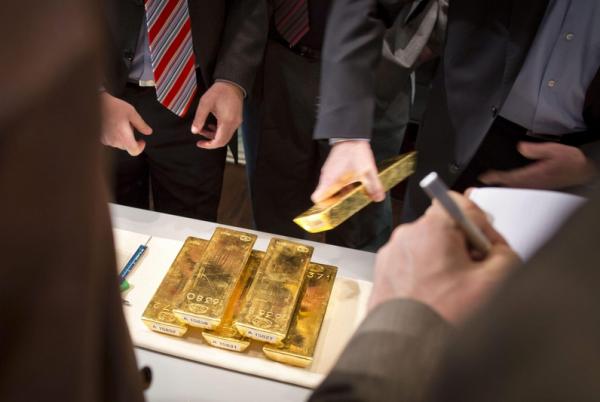By Geoffrey Smith
Investing.com -- Gold prices fell on Tuesday as the U.S. and U.K. returned from long holiday weekends in optimistic moods, confident of a robust economic rebound and a quick breakthrough in the search for a vaccine to treat the Covid-19 coronavirus.
By 11:35 AM ET (1535 GMT), gold futures for delivery on the Comex exchange were down 1.5% at $1,710.00 a troy ounce, as investors moved money out of havens into riskier assets such as equities and industrial commodities. Spot gold was down 0.5% at $1,715.12, the first time it has traded above the benchmark futures contract in months. Physical constraints that led to futures enjoying a premium of over $50 at times in March and April have now, it seems, completely unwound themselves.
Silver futures prices again outperformed, even on the way down, losing only 0.3% to $17.64 an ounce, while platinum futures lost 1.2% to $875.70 an ounce.
“Silver and platinum were more aggressively sold off than gold during the panic wave in March,” Georgette Boele, commodity analyst with ABN AMRO (AS:ABNd), wrote in a monthly note to clients. “As a result, prices were at relatively attractive levels.”
The gold/silver price ratio has now dropped to below 97, from a high of 127 in March.
Elsewhere Tuesday, government bond prices also fell, driving yields higher in both the U.S. and Europe. The 10-year U.S. Treasury note yield rose four basis points to 0.70%, its highest in nearly a week, while its German counterpart rose six basis points to a one-month high of -0.43% and spreads to riskier eurozone sovereigns tightened considerably.
The Italian 10-year premium over German fell below 200 basis points for the first time in seven weeks, as expectations strengthened that the European Commission will be able to force through a multi-billion recovery plan for the EU economy that includes a much greater degree of direct fiscal support for the bloc’s more challenged members.
Economic data only gave qualified support to the risk-on move, however. The Conference Board’s index of U.S. consumer confidence ticked up only marginally from last month’s downwardly-revised 85.7 to 86.6, below consensus expectations of 88.
The bounce in German consumer confidence in May, announced earlier, had likewise fallen short of expectations.
Only U.S. new home sales, nearly stable at 623,000 in April, were clearly better than expectations.
